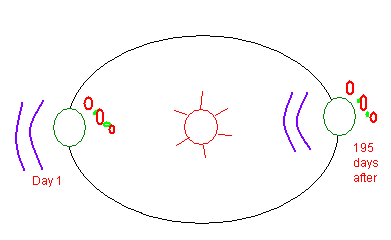Rainfall prediction forms a voluminous part of Mundane astrology followed in India since time immemorial. Names of prominent Rishis such as Kashyapa, Parashara, Garga and Vatsa are associated with prediction of rainfall. Perhaps the earliest reference comes in the mantras of Ashvamedha yajna. In the ritualistic question and answer dialogue in the course of Ashvamedha yajna, one question is
“Who is called poorvachitti?”
The reply that follows is:-
“The rain falling is called poorva chitti”.
Rainfall prediction is considered as Purva Chitti or prior wisdom in Vedic Thought as it can be judged in advance. Reiterating this Varahamihira says,
“The predictions of an astronomer who pays exclusive attention, both day and night to the indications of rain afforded by pregnant clouds, will as little fail of success as the words of rishis.
What science can probably excel, in interest, the science relating to the prediction of rain, by a thorough study of which one though ignorant in other matters passes for a great astrologer in this Kaliyuga.”
(Brihad samhita, Chapter 21 – verses 3 &4)
The words ‘pregnant clouds’ in the above verse refer to the initial meteorological conditions that give rise to or related to the rainfall at a later date. Presence or absence of these conditions indicate whether there was an initial conception of rainfall at all. The texts variously call this as ‘foetus formation’ or ‘nature of pregnancy’ or ‘pregnancy of clouds’
One starts looking for pregnant clouds in the sky in the (solar) month of Margazhi (Sagittarius), soon after the rainfall of the previous season is over. When the Sun enters the star Pooradam (Purvashada) in the sign of Sagittarius in Margazhi, it is said that the conditions for the next season’s rainfall start taking shape. This goes on for 13 days when the Sun will be crossing the star Pooradam. This period is known as pregnancy period.
In Tamil this is known as Garbottam. One can find the beginning and end of this Garbottam period mentioned in the almanacs (Panchangam) of Tamilnadu. The Garbottam mentioned in almanacs refers to a short duration of observation but which can give a rough idea about a long range period that covers both South West and North East Monsoon periods (SWM and NEM)
There is another concept known as everyday Garbottam which must be checked everyday in a given place until July to predict the rainfall till the end of NEM season.
The basic rationale of this method of Garbottam is that the kind of meteorological features present in a particular place is related to rainfall or no-rainfall that would occur in that place 195 days later! In other words, the meteorological conditions seen at any place at a particular time in space is related to the rainfall conditions at the same place when earth has moved to 180 degrees away from that initial place. This can be shown by a diagram as follows:

The meteorological features present (shown as smaller circles) on day 1 at a particular place is related to the meteorological features seen after 195 days when the place is just opposite to the location on day 1.
For calculation of the day, one must be aware of the waxing and waning phase of the Moon and the days in each phase. Suppose favourable meteorological features (pregnancy features) are noticed in the waxing period of Margazhi, the rainfall would occur in the waning period 6 months later, counting from Margazhi, that is, in the month of Vaikashi. Thus the lunar phase and solar month are combined as time keepers.
There are many more ideas related to predicting rainfall given by sages which seem to have been backed by observation through generations in natural surroundings. They are documented in Brihad Samhita and Prasna Marga. Any reader of those books would be surprised to see the depth of the details such as the time, duration, place, extent, quantity and quality (heavy or light) of rainfall that can possibly be detected as early as 6- 1/2 months before the rains occur. These chapters deserve a deeper study and application so as to test them in the current times and if successful to incorporate them in rainfall prediction models.
Common man also stands to benefit by the knowledge of this. Until a century ago Garbottam was checked by agriculturists and others. So it is with the combined goals of reviving or re-introducing this knowledge, for enabling common man to foresee rainfall or deficit of it in a place and for verification and application as one of the tools in rainfall models, this blog is being created. At the time of starting this I am entering the 3rd year of observation and checking the results. If more people start doing the same from different locations, we may get a better idea about the reliability of the concepts and applicability of the same in subsequent seasons.
Share this:





